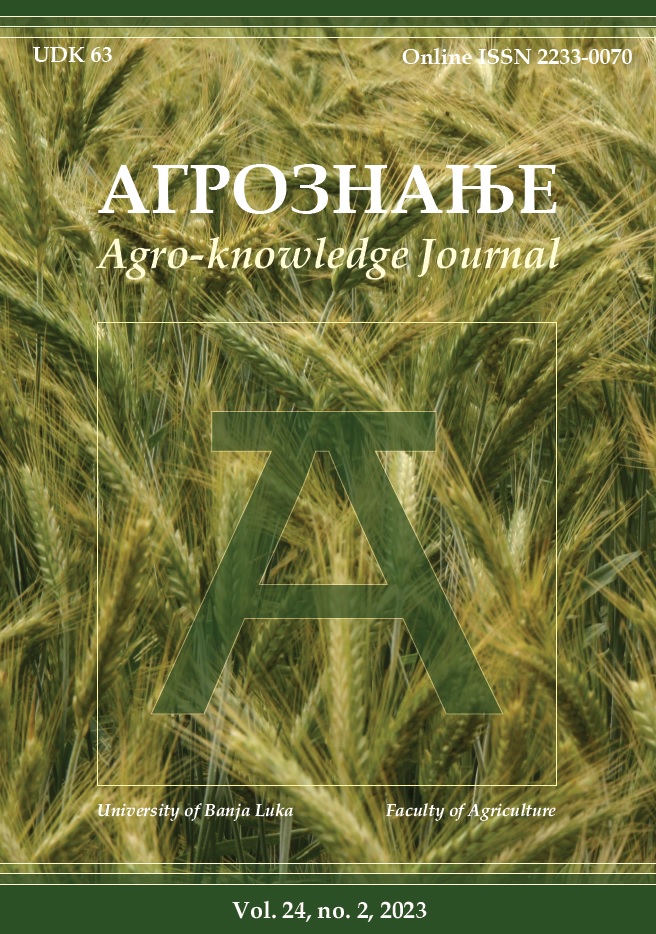Functional responses of larval instars of Cryptolaemus Montrouzieri Mulsant (Coleoptera: Coccinellidae) to the Cochineal Scale, Dactylopius Opuntiae (Cockerell) (Hemiptera: Dactylopiidae)
DOI:
https://doi.org/10.7251/AGREN2304155EAAbstract
Cryptolaemus montrouzieri Mulsant (Coleoptera: Coccinellidae) is native to Australia and commonly known as ‘cochineal destroyer’. This predator has been introduced in many countries worldwide for biological control of many scale pest species including the cochineal of cactus pear, Dactylopius opuntiae (Cockerell) (Hemiptera: Dactylopiidae). The functional responses of larval instars of C. montrouzieri on D. opuntiae (Cockerell) adult females were evaluated under laboratory conditions at 26°C and 12:12 (L:D) h. All larval instars of the predator were first starved for 12 h, then placed individually in Petri dishes (14.5 cm in diameter) with different densities (5, 10, 15, 20, 25) of D. opuntiae females for 24 h. The logistic regression for larval instars of the predator had a negative and significant linear parameter (P1) indicating a type II functional response. Attack rates (0.010, 0.028, 0.042, and 0.052) and handling times (11.945, 6.834, 4.878, and 3.971 hours) for first to fourth instar larvae, respectively, which were estimated using the Holling’s disc equation. This study provides a better understanding of the functional response of C. montrouzieri larval instars to D. opuntiae, which may be useful for effective use of C. montrouzieri in the management of the cactus pear cochineal infestations.

